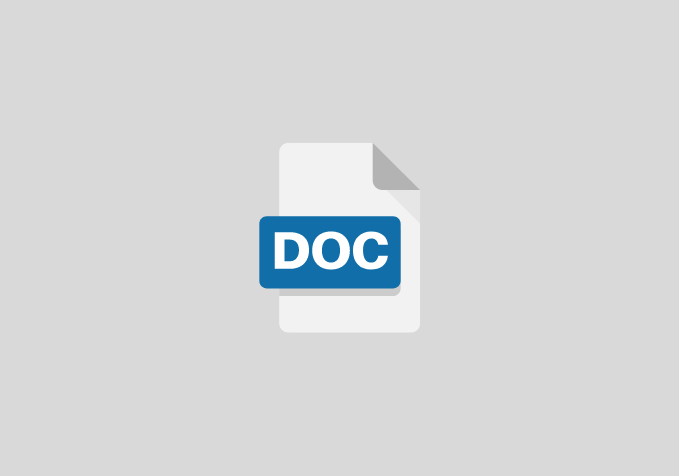An Assessment of Workers Welfare as a Tool for Organizational Effectiveness
CHAPTER ONE
Objectives of the study
The Primary goal of this study is to assess the welfare of workers as a tool for organizational effectiveness. Specifically, the objectives are:
- To find whether workers welfare helps in providing good industrial relations.
- To know about the employee’s satisfaction towards welfare measures.
- To find out the facilities entitled by Seven-up Bottling company.
CHAPTER TWO
REVIEW OF LITERATURES
Welfare and its definitions
Welfare is a type of financial or other aid provided to people in need and can take many forms in various countries or contexts. In most developed countries, it is largely provided by the government. It may also be organized by charities, informal social groups; religious groups; or inter-governmental organizations such as the United Nations (Encarta dictionary 2010) Welfare can take a variety of forms, such as monetary payments, subsidies and vouchers, health services, or housing. Welfare can be provided by governments, non-governmental organizations, or a combination of the two. Welfare programs may be funded directly by governments, or in social insurance models, by the members of the welfare scheme (Acheaw 2011).
In a more general sense, welfare also means the well-being of individuals or a group – in other words, their health, happiness, safety, prosperity, and fortunes. Welfare may be provided directly by governments or their agencies, by private organizations, or by a combination. Welfare practices are motivational avenues put in place by management to enhance productivity and motivate staff to give off their best. These include incentive packages, training opportunities etc. (Acheaw 2011). In addition to increasing employee motivation to perform well, incentive pay can reduce turnover among good performers and is meant to link at least a portion of pay to job performance and encourage superior performance. High performers are more motivated to stay with an organization when they are rewarded more generously than poor performers and it can be cost effective. (Acheaw 2011). It is therefore important that employers should take staff welfare seriously. Staff welfare practices include good salaries, condusive work environment, available working tools, medical facilities etc. Fringe benefits are the additional non-wage or non-salary forms of compensation provided to an organization’s workforce. The employee gains from being more responsive to a wider range of needs in a diverse workforce (Acheaw 2011).
CHAPTER THREE
RESEARCH METHODOLOGY
RESEARCH DESIGN
A research design is the arrangement of conditions for collection and analysis of data in a manner that aims to combine relevance to the research purpose with economy in procedure. Regarding this project, descriptive research design concern with describing the perception of each individuals or narrating facts on welfare measures and diagnostic design helps in determine the frequency with which something occurs or it’s associated with something else. These two-research design help in understand the characteristic in a given situation. Think systematically about aspects in given situation, offers idea for probe and research help to make certain simple decision.
CHAPTER FOUR
DATA ANALYSIS AND INTERPRETATION
PERCENTAGE ANALYSIS
CHAPTER FIVE
SUMMARY OF FINDINGS, CONCLUSION AND RECOMMENDATION
FINDINGS OF THE STUDY
- It was found that 0% of respondents belongs to less than 20 years ,25 % of respondents belongs to 21-25 years,41% of respondents belongs to 26-35 years,26% of the respondents belongs to 36-50 years and 8% of the respondents belongs to above 50 years.
- 67% were Male employees and 33% were Female employees.
- 60% of respondents fall in the category of Degree/Diploma,35% of respondents fall in the category of Post graduate, 5% of respondents fall in the category of Others.
CONCLUSION
Employee welfare measures are advocated to maintain a strengthen manpower both physically and mentally. The study of various welfare measures brings in to light that the present measures taken by the company. The improvement in working condition are suggested to improve effectiveness of the employee welfares measures like canteen facility, drinking water, spittoons, rest rooms and housing facilities which in turn would build the morale and increase the productivity of the employees.
REFERENCES
- Achew Owusu (2011): Staff Development and Employee Welfare Practices and their Effects on Productivity In Three Special Libraries In Ghana, Koforidua Polytechnic, Ghana. 2.
- Concise Oxfords Dictionary. (2000), Oxford Printing Press, Glasgow. 3.
- Dauda, Y.A Akingbade, W.A (2010): Employee Incentive Management and Financial Participation in the Banking Industry; Problems and Prospects. European Journal Of Economics, Finance and Administration Science. 4.
- Erimafa, J.T Akpome, D.E. Ikpotokin, F. (2007): Statistics for Undergraduates, Osasu Publishers, Benin City 5.
- Gambo Ibrahim (2004): Research Methods and Precison Journalism; Aloaye Publishing Company Encarta Dictionary 2010 6.
- Getis, F Fellman, M (2004): Introduction To Geography, MacGraw Hill Publishers. 53 7. Guidelines for the Preparation of Projects, Reports, Thesis and Dissertations, National Open University, 2009 8.


